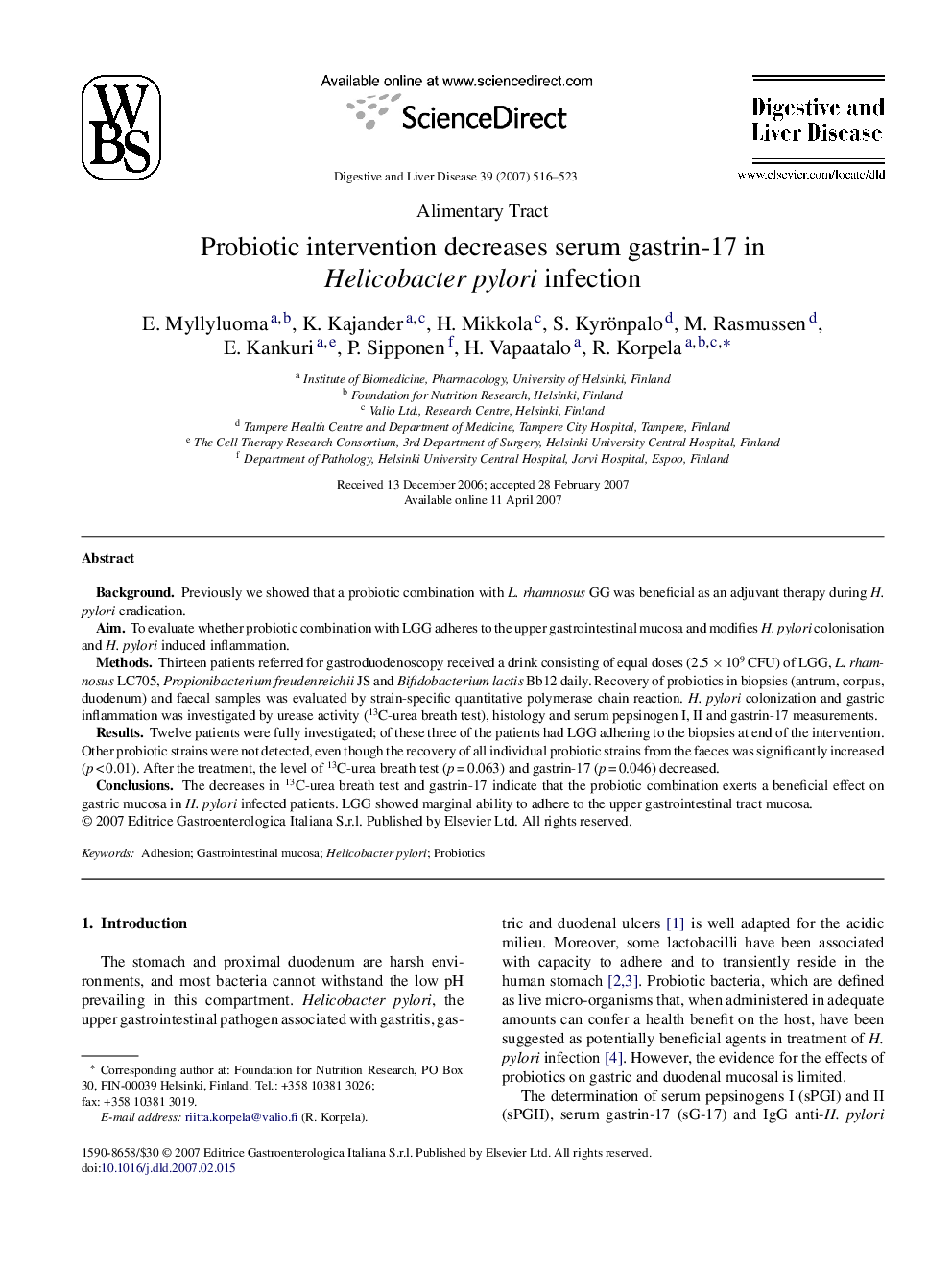| Article ID | Journal | Published Year | Pages | File Type |
|---|---|---|---|---|
| 3266516 | Digestive and Liver Disease | 2007 | 8 Pages |
BackgroundPreviously we showed that a probiotic combination with L. rhamnosus GG was beneficial as an adjuvant therapy during H. pylori eradication.AimTo evaluate whether probiotic combination with LGG adheres to the upper gastrointestinal mucosa and modifies H. pylori colonisation and H. pylori induced inflammation.MethodsThirteen patients referred for gastroduodenoscopy received a drink consisting of equal doses (2.5 × 109 CFU) of LGG, L. rhamnosus LC705, Propionibacterium freudenreichii JS and Bifidobacterium lactis Bb12 daily. Recovery of probiotics in biopsies (antrum, corpus, duodenum) and faecal samples was evaluated by strain-specific quantitative polymerase chain reaction. H. pylori colonization and gastric inflammation was investigated by urease activity (13C-urea breath test), histology and serum pepsinogen I, II and gastrin-17 measurements.ResultsTwelve patients were fully investigated; of these three of the patients had LGG adhering to the biopsies at end of the intervention. Other probiotic strains were not detected, even though the recovery of all individual probiotic strains from the faeces was significantly increased (p < 0.01). After the treatment, the level of 13C-urea breath test (p = 0.063) and gastrin-17 (p = 0.046) decreased.ConclusionsThe decreases in 13C-urea breath test and gastrin-17 indicate that the probiotic combination exerts a beneficial effect on gastric mucosa in H. pylori infected patients. LGG showed marginal ability to adhere to the upper gastrointestinal tract mucosa.
